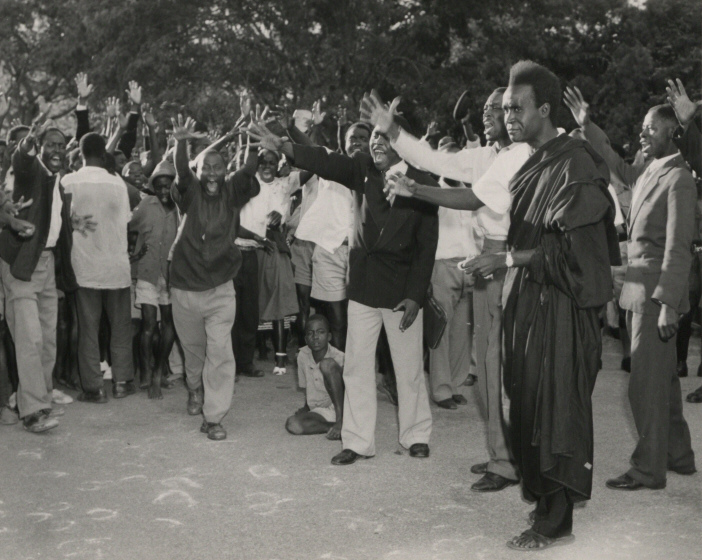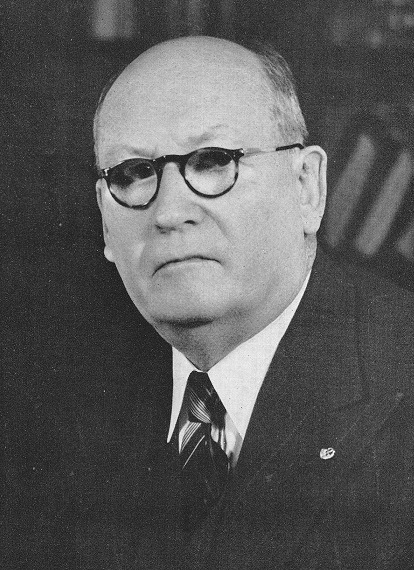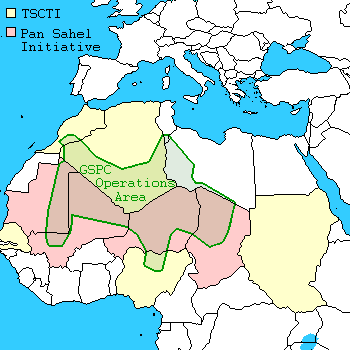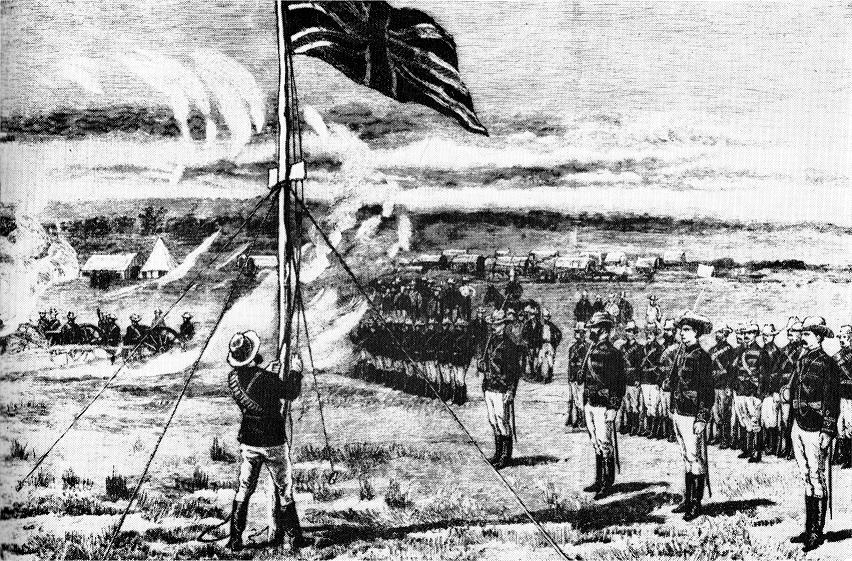|
Unholy Alliance (geopolitical)
An unholy alliance popularly refers to an alliance which is perceived as unnatural, unusual, or simply undesirable, sometimes between seemingly antagonistic parties. Original use In 1855, the term "Unholy Alliance" was used for Western European alliances with the Ottoman Empire against the interests of Russia, Greece, and most of the Balkans. It was an ironic reference to the original Holy Alliance created after the Napoleonic War in 1815 by Tsar Alexander I of Russia. Later use In 1912, the American politician Theodore Roosevelt campaigned against the "invisible government", "the unholy alliance between corrupt business and corrupt politics". In the context of World War II, the term has been used for the Molotov–Ribbentrop Pact between Nazi Germany and the Soviet Union, which partitioned Poland. The term was also used by the short-lived Biafra to refer to Nigeria's allies: the United Kingdom and the Soviet Union. The term came to be used by African nationalists to describe ... [...More Info...] [...Related Items...] OR: [Wikipedia] [Google] [Baidu] |
Western European
Western Europe is the western region of Europe. The region's extent varies depending on context. The concept of "the West" appeared in Europe in juxtaposition to "the East" and originally applied to the Western half of the ancient Mediterranean world, the Latin West of the Roman Empire, and " Western Christendom". Beginning with the Renaissance and the Age of Discovery, roughly from the 15th century, the concept of ''Europe'' as "the West" slowly became distinguished from and eventually replaced the dominant use of "Christendom" as the preferred endonym within the area. By the Age of Enlightenment and the Industrial Revolution, the concepts of "Eastern Europe" and "Western Europe" were more regularly used. The distinctiveness of Western Europe became most apparent during the Cold War, when Europe was divided for 40 years by the Iron Curtain into the Western Bloc and Eastern Bloc, each characterised by distinct political and economical systems. Historical divisions Classical an ... [...More Info...] [...Related Items...] OR: [Wikipedia] [Google] [Baidu] |
African Nationalism
African nationalism is an umbrella term which refers to a group of political ideologies in sub-Saharan Africa, which are based on the idea of national self-determination and the creation of nation states.African nationalism The ideology emerged under Western European colonialism and colonization, European colonial rule during the 19th and 20th centuries and was loosely inspired by nationalist ideas from Europe. Originally, African nationalism was based on demands for self-determination and played an important role in forcing the process of decolonisation of Africa ( 1957–66). However, the term refers to a broad range of different ideological and political movements and should not be confused with Pan-Africanism which may seek the federalism, ... [...More Info...] [...Related Items...] OR: [Wikipedia] [Google] [Baidu] |
Apartheid
Apartheid ( , especially South African English: , ; , ) was a system of institutionalised racial segregation that existed in South Africa and South West Africa (now Namibia) from 1948 to the early 1990s. It was characterised by an authoritarian political culture based on ''baasskap'' ( 'boss-ship' or 'boss-hood'), which ensured that South Africa was dominated politically, socially, and economically by the nation's minority White South Africans, white population. Under this minoritarianism, minoritarian system, white citizens held the highest status, followed by Indian South Africans, Indians, Coloureds and Ethnic groups in South Africa#Black South Africans, black Africans, in that order. The economic legacy and social effects of apartheid continue to the present day, particularly Inequality in post-apartheid South Africa, inequality. Broadly speaking, apartheid was delineated into ''petty apartheid'', which entailed the segregation of public facilities and social ev ... [...More Info...] [...Related Items...] OR: [Wikipedia] [Google] [Baidu] |
UN General Assembly
The United Nations General Assembly (UNGA or GA; , AGNU or AG) is one of the six principal organs of the United Nations (UN), serving as its main deliberative, policymaking, and representative organ. Currently in its 79th session, its powers, composition, functions, and procedures are set out in Chapter IV of the United Nations Charter. The UNGA is responsible for the UN budget, appointing the non-permanent members to the Security Council, appointing the UN secretary-general, receiving reports from other parts of the UN system, and making recommendations through resolutions. It also establishes numerous subsidiary organs to advance or assist in its broad mandate. The UNGA is the only UN organ where all member states have equal representation. The General Assembly meets under its president or the UN secretary-general in annual sessions at the General Assembly Building, within the UN headquarters in New York City. The primary phase of these meetings generally runs from ... [...More Info...] [...Related Items...] OR: [Wikipedia] [Google] [Baidu] |
African Union
The African Union (AU) is a continental union of 55 member states located on the continent of Africa. The AU was announced in the Sirte Declaration in Sirte, Libya, on 9 September 1999, calling for the establishment of the African Union. The bloc was launched on 9 July 2002 in Durban, South Africa. The intention of the AU was to replace the Organisation of African Unity (OAU), established on 25 May 1963 in Addis Ababa by 32 signatory governments; the OAU was disbanded on 9 July 2002. The most important decisions of the AU are made by the Assembly of the African Union, a semi-annual meeting of the heads of state and government of its member states. The AU's secretariat, the African Union Commission, is based in Addis Ababa. The largest city in the AU is Lagos, Nigeria while the list of urban areas in Africa by population, largest urban agglomeration is Cairo, Egypt. The African Union has more than 1.3 billion people and an area of around and includes world landmarks such as the ... [...More Info...] [...Related Items...] OR: [Wikipedia] [Google] [Baidu] |
Lisbon
Lisbon ( ; ) is the capital and largest city of Portugal, with an estimated population of 567,131, as of 2023, within its administrative limits and 3,028,000 within the Lisbon Metropolitan Area, metropolis, as of 2025. Lisbon is mainland Europe's westernmost capital city (second overall after Reykjavík, Reykjavik), and the only one along the Atlantic coast, the others (Reykjavik and Dublin) being on islands. The city lies in the western portion of the Iberian Peninsula, on the northern shore of the River Tagus. The western portion of its metro area, the Portuguese Riviera, hosts the westernmost point of Continental Europe, culminating at Cabo da Roca. Lisbon is one of the List of oldest continuously inhabited cities, oldest cities in the world and the second-oldest European capital city (after Athens), predating other modern European capitals by centuries. Settled by pre-Celtic tribes and later founded and civilized by the Phoenicians, Julius Caesar made it a municipium ... [...More Info...] [...Related Items...] OR: [Wikipedia] [Google] [Baidu] |
Harare
Harare ( ), formerly Salisbury, is the Capital city, capital and largest city of Zimbabwe. The city proper has an area of , a population of 1,849,600 as of the 2022 Zimbabwe census, 2022 census and an estimated 2,487,209 people in its metropolitan province. The city is situated in north-eastern Zimbabwe in the country's Mashonaland region. Harare Metropolitan Province incorporates the city and the municipalities of Chitungwiza, Epworth, Zimbabwe, Epworth and Ruwa. The city sits on a plateau at an elevation of above sea level, and its climate falls into the subtropical highland category. The city was founded in 1890 by the Pioneer Column, a small military force of the British South Africa Company, and was named Southern Rhodesia, Fort Salisbury after the British Prime Minister Robert Gascoyne-Cecil, 3rd Marquess of Salisbury, Lord Salisbury. Company Company rule in Rhodesia, administrators Demarcation line, demarcated the city and ran it until Southern Rhodesia achieved respo ... [...More Info...] [...Related Items...] OR: [Wikipedia] [Google] [Baidu] |
Pretoria
Pretoria ( ; ) is the Capital of South Africa, administrative capital of South Africa, serving as the seat of the Executive (government), executive branch of government, and as the host to all foreign embassies to the country. Pretoria straddles the Apies River and extends eastward into the foothills of the Magaliesberg mountains. It has a reputation as an academic city and centre of research, being home to the Tshwane University of Technology (TUT), the University of Pretoria (UP), the University of South Africa (UNISA), the Council for Scientific and Industrial Research (CSIR), and the Human Sciences Research Council. It also hosts the National Research Foundation (South Africa), National Research Foundation and the South African Bureau of Standards. Pretoria was one of the host cities of the 2010 FIFA World Cup. Pretoria is the central part of the City of Tshwane Metropolitan Municipality which was formed by the amalgamation of several former local authorities, including B ... [...More Info...] [...Related Items...] OR: [Wikipedia] [Google] [Baidu] |
Ethiopia
Ethiopia, officially the Federal Democratic Republic of Ethiopia, is a landlocked country located in the Horn of Africa region of East Africa. It shares borders with Eritrea to the north, Djibouti to the northeast, Somalia to the east, Kenya to the south, South Sudan to the west, and Sudan to the northwest. Ethiopia covers a land area of . , it has around 128 million inhabitants, making it the List of countries and dependencies by population, thirteenth-most populous country in the world, the List of African countries by population, second-most populous in Africa after Nigeria, and the most populous landlocked country on Earth. The national capital and largest city, Addis Ababa, lies several kilometres west of the East African Rift that splits the country into the African Plate, African and Somali Plate, Somali tectonic plates. Early modern human, Anatomically modern humans emerged from modern-day Ethiopia and set out for the Near East and elsewhere in the Middle Paleolithi ... [...More Info...] [...Related Items...] OR: [Wikipedia] [Google] [Baidu] |
Addis Ababa
Addis Ababa (; ,) is the capital city of Ethiopia, as well as the regional state of Oromia. With an estimated population of 2,739,551 inhabitants as of the 2007 census, it is the largest city in the country and the List of cities in Africa by population, eleventh-largest in Africa. Addis Ababa is a highly developed and important cultural, artistic, financial and administrative center of Ethiopia. It is widely known as one of Africa's major capitals. The founding history of Addis Ababa dates back to the late 19th century by Menelik II, Negus of Shewa, in 1886 after finding Mount Entoto unpleasant two years prior. At the time, the city was a resort town; its large mineral spring abundance attracted nobilities of the empire and led them to establish permanent settlement. It also attracted many members of the working classes – including artisans and merchants – and foreign visitors. Menelik II then formed his Menelik Palace, imperial palace in 1887. Addis Ababa became the em ... [...More Info...] [...Related Items...] OR: [Wikipedia] [Google] [Baidu] |
Organization Of African Unity
The Organisation of African Unity (OAU; , OUA) was an African intergovernmental organization established on 25 May 1963 in Addis Ababa, Ethiopia, with 33 signatory governments. Some of the key aims of the OAU were to encourage political and economic integration among member states, and to eradicate colonialism and neo-colonialism from the African continent. The absence of an armed force like the United Nations peacekeepers left the organization with no means to enforce its decisions. It was also unwilling to become involved in the internal affairs of member nations, prompting some critics to claim the OAU as ineffective in taking decisive action. Recognizing this, in September 1999 the OAU issued the Sirte Declaration, calling for a new body to take its place. On 9 July 2002, the OAU's Chairman, South African President Thabo Mbeki, formally dissolved the OAU and replaced it with the African Union (AU), its immediate successor, which upholds many of the founding principles o ... [...More Info...] [...Related Items...] OR: [Wikipedia] [Google] [Baidu] |
Portuguese Empire
The Portuguese Empire was a colonial empire that existed between 1415 and 1999. In conjunction with the Spanish Empire, it ushered in the European Age of Discovery. It achieved a global scale, controlling vast portions of the Americas, Africa and various islands in Asia and Oceania. It was one of the most powerful empires of the early modern period, while at its greatest extent in 1820, covering 5.5 million square km ( million square miles), making it among the List of largest empires, largest empires in history. Composed of colonialism, colonies, Factory (trading post)#Portuguese feitorias (c. 1445), factories, and later Territory#Overseas territory, overseas territories, it was the longest-lived colonial empire in history, from the conquest of Ceuta in North Africa in 1415 to the handover of Macau to China in 1999. The power and influence of the Kingdom of Portugal would eventually expand across the globe. In the wake of the Reconquista, Portuguese maritime exploration, Port ... [...More Info...] [...Related Items...] OR: [Wikipedia] [Google] [Baidu] |









